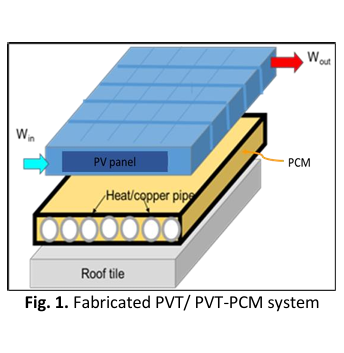Fabricated of Photovoltaic Thermal System with Phase Change Material
DOI:
https://doi.org/10.37934/arfmts.121.2.6572Keywords:
Photovoltaic thermal, solar radiation, phase change material, economic analysis, annual worth, payback periodAbstract
At present, solar energy is widely recognized as one of the primary sources of renewable energy. Nonetheless, conventional solar photovoltaic (PV) panels suffer a significant decrease in efficiency when exposed to extreme temperatures, making them unsuitable for long-term operation. To address these limitations, hybrid photovoltaic thermal (PVT) systems with phase change materials (PCM) have emerged as sophisticated solutions, leveraging thermal energy for water heating and PCM for thermal energy storage. This work aims to evaluate key economic parameters of fabricated PVT system (with and without PCM) against commercial solar water heaters and electric heaters, using metrics such as payback period and annual worth. The calculations are carried out using Microsoft Excel spreadsheets. The results reveal that the payback period for PVT systems, both with and without PCM, exceeds 25 years, primarily due to the high initial costs associated with PVT technology. In contrast, solar water heaters and electric water heaters offer shorter payback periods. Specifically, after 25 years, the annual worth for the fabricated PVT system is MYR 923.12. Essentially, the economic analysis suggests that the PVT system has a longer operational lifetime than solar water heaters and electric heaters, despite the extended payback period. This economic analysis has the potential to encourage the large-scale fabrication and installation of efficient PVT-PCM systems. It provides consumers with a viable alternative to consider installing PVT and PVT-PCM systems instead of PV and solar thermal systems separately. Additionally, this study contributes to reducing carbon emissions and advancing the Sustainable Development Goals (SDGs).
Downloads

































